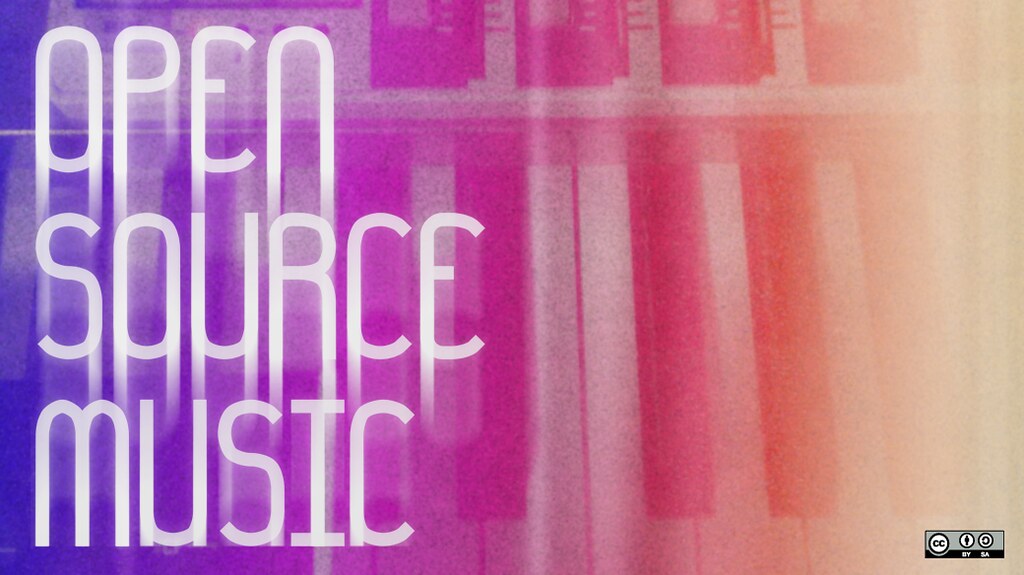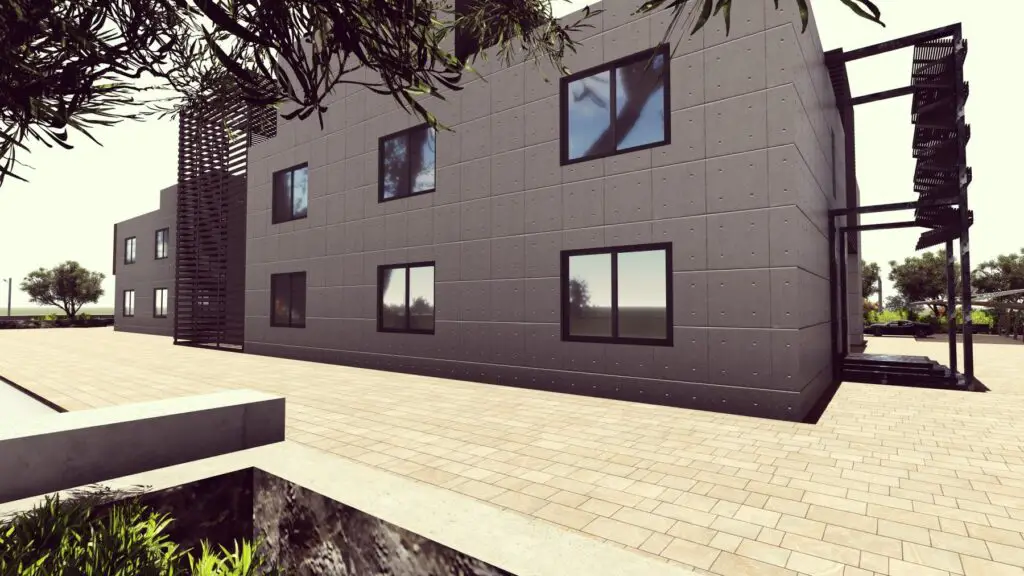Music production workflow is the process of creating and producing music, from idea generation to final mixing and mastering. With the right workflow in place, you can optimize your productivity and creativity, resulting in high-quality music that meets your goals and objectives. In this expert guide, we will help you master the music production workflow, covering everything from understanding the different stages of music production to choosing the right software, setting up your workspace, streamlining your workflow, and troubleshooting common issues. By the end of this article, you will have the knowledge and tools you need to achieve a professional-sounding mix and master for your music production projects.
Table of Contents
Introduction
To start our discussion on optimizing music production workflow, let’s first define what we mean by this term. Music production workflow encompasses the entire process of creating music, from the initial concept to the final mix and master. This process is composed of several distinct stages, each of which requires different software tools and techniques to achieve the best results.
It is essential to optimize your workflow to achieve maximum productivity and creativity. By optimizing your workflow, you can reduce the time and effort needed to complete each stage of the music production process, allowing you to focus on the creative aspects of music production. With that in mind, let’s take a closer look at each stage of the workflow and explore how to optimize and streamline your music production process.
Understanding the Music Production Workflow
The music production workflow can be broken down into distinct stages, each of which requires different software tools and techniques. These stages are:
1. Composition
The composition stage is where you create the initial idea for your track. This stage typically involves experimenting with different chord progressions, melodies, and rhythms until you find something that you like. This is the foundation of your track, and it’s important to spend enough time on this stage to ensure that it’s solid.
2. Arrangement
Once you have a basic idea for your track, you’ll need to flesh it out into a full arrangement. This involves adding additional instruments, creating variations on the main theme, and building tension and release throughout the track. Arrangement is where you structure your track and make sure it has a clear progression, so it’s important to spend time on this stage to ensure that your track is well-organized.
3. Sound Design
In this stage, you’ll focus on creating or selecting the sounds that will be used in your track. This might involve recording live instruments, synthesizing sounds using virtual instruments, or using samples. The sound design stage is where you create the unique sonic signature of your track, so it’s important to experiment and be creative.
4. Mixing
Once you have all of the individual elements of your track recorded or programmed, you’ll need to mix them together to create a cohesive whole. This involves adjusting levels, panning, and EQ to make sure that each element of the track fits together well. Mixing is where you balance the different elements of your track to create a polished final product.
5. Mastering
The final stage of music production involves mastering your track. This involves applying final processing to your mix to make sure it sounds great on a wide range of playback devices. Mastering is where you ensure that your track is loud enough, has the right amount of compression, and has a consistent tonal balance.
Each of these stages requires different software tools and techniques, but there are some key tools that you’ll need for every stage of the music production workflow. Let’s take a closer look at some of the most important tools you’ll need to master your music production workflow.

Understanding the Role of Different Software Tools in the Music Production Workflow
Music production software is an essential part of any music production workflow. It allows you to record, edit, mix, and master your music. There are many different types of software tools available, each with its own unique set of features designed to help you accomplish specific tasks within the music production process. Here are some of the most popular music production software options:
Digital Audio Workstations (DAWs)
A Digital Audio Workstation (DAW) is a software application that allows you to record, edit, and produce audio. It’s the core software tool for music production. Some popular DAWs include:
-
Ableton Live: Ableton Live is a popular DAW that is known for its intuitive interface and powerful features. It is especially popular among electronic music producers and live performers.
-
Logic Pro X: Logic Pro X is a DAW developed by Apple that is known for its ease of use and extensive library of virtual instruments and plugins. It is popular among both beginners and professionals.
-
Pro Tools: Pro Tools is a professional-grade DAW that is widely used in the music and film industries. It is known for its advanced mixing and editing capabilities.
Software Instruments
Software instruments, also known as virtual instruments, are software applications that allow you to play back sampled sounds using your computer. They can be used to create realistic instrument sounds or to create entirely new sounds. Some popular software instruments include:
-
Native Instruments’ Kontakt: Kontakt is a popular software instrument that allows you to play back sampled sounds using your computer. It is especially popular among producers who work with orchestral and cinematic music.
-
Spectrasonics’ Omnisphere: Omnisphere is a software synthesizer that allows you to create unique and complex sounds using your computer. It is popular among producers who work with electronic and experimental music.
Audio Effects and Plugins
Audio effects and plugins are software tools that allow you to add creative and technical effects to your audio. Some popular audio effects and plugins include:
-
Waves Plugins: Waves Plugins are a collection of audio plugins that offer a wide variety of creative and technical effects. They are widely used in the music and film industries.
-
Izotope Ozone: Izotope Ozone is a comprehensive mastering suite that allows you to add a professional polish to your mix.
In addition to these software tools, it’s important to have a solid understanding of organization and file management. Keeping your files organized is critical for maintaining an efficient workflow, as it allows you to quickly find the sounds and samples you need when you need them. By using consistent file naming conventions and folder structures, you can save a significant amount of time and effort when working on larger projects.

Insider Tips from a Music Producer
To get more insights into the music production workflow, we spoke with John, a seasoned music producer with over 10 years of experience in the industry. John shared some insider tips on how to optimize your music production workflow:
1. Stay Organized
One of the most crucial things you can do to optimize your workflow is to stay organized. It is essential to create a file naming and organizing system that makes sense to you. This will save you time and make it easier to find the sounds and samples you need when you need them. Use a folder structure that categorizes files by project, track, and type of sound. You can also use color coding to easily identify files.
2. Use Templates
Templates are a great way to save time when creating music. Creating templates for commonly used settings can save you a lot of time. For instance, you might create a template for a specific type of drum kit or a preset for a commonly used effects chain. This can help you jumpstart your workflow and get your ideas down faster. You can also create templates for different genres of music you produce, so that you can easily switch between them.
3. Collaborate Efficiently
Collaboration is an essential part of music production. Use online collaboration tools to share files and communicate with other musicians and producers. This can help you stay on track and ensure that everyone is on the same page. You can use cloud-based storage services like Dropbox or Google Drive to share files. You can also use collaboration tools like Splice or GitHub to collaborate with other producers and musicians.
By following these insider tips, you can optimize your music production workflow and create better, more consistent results.
Planning Your Music Production Workflow
Now that you have a basic understanding of the different stages of the music production process and the software tools involved, it’s time to start planning your workflow.
Set Clear Goals and Objectives
The first step in planning your music production workflow is to set clear goals and objectives for each stage of the process. By setting achievable goals, you create a roadmap that helps you stay focused and motivated. For example, you might set a goal to come up with at least three different chord progressions during the composition stage, or to spend no more than two hours on sound design.
Create a Timeline and Schedule
Once you have your goals in place, it’s important to create a timeline and schedule for your music production workflow. This will help you stay on track and ensure that you’re making progress towards your goals. It’s important to allocate enough time for each stage of the workflow, as rushing through important steps can lead to mistakes and delays in the long run. Be sure to leave some buffer time in your schedule to account for unexpected issues or delays.
Track Your Progress
To ensure that you’re staying on track with your goals and timeline, it’s important to track your progress. You can do this by using a task management tool or a simple spreadsheet to keep track of completed tasks, pending tasks, and the time spent on each task. This will help you identify areas where you’re spending too much time or where you need to make adjustments to your workflow.
Review and Adjust
Finally, it’s important to regularly review and adjust your music production workflow. This will help you identify areas where you can improve your workflow, optimize your process, and reduce wasted time. Be open to feedback from other musicians and producers, and don’t be afraid to experiment with new techniques and tools to find what works best for you.
By taking the time to plan your music production workflow, you’ll be able to optimize your process, increase productivity, and achieve better results in less time.
Impact of Music Production Workflow on Creativity
Optimizing your music production workflow has a significant impact on your creativity. A streamlined workflow not only saves time and effort but also helps you focus on the creative aspects of music production. Studies have shown that creativity is often hindered by distractions and interruptions. By minimizing these distractions and interruptions, you can create an environment that supports your creative process, leading to more innovative and unique ideas.
In addition, a well-optimized workflow can help you stay in the flow state, a mental state where you are fully immersed in your work and performing at your best. By eliminating unnecessary steps and distractions, you can achieve a state of optimal performance and creativity. This can help you generate ideas more efficiently and with less effort.
Furthermore, planning and organizing your music production workflow can help you achieve your goals and objectives for each stage of the workflow. This can help you stay motivated and focused on the creative process, leading to a more productive and satisfying outcome.
In conclusion, optimizing your music production workflow can unlock your full creative potential, allowing you to create music that truly reflects your vision. By creating a workflow that minimizes distractions and interruptions, helps you stay in the flow state, and supports your goals and objectives, you can achieve a more efficient and productive music production process.
Choosing the Right Music Production Software
Choosing the right music production software is crucial for optimizing your workflow. To make the best selection, consider the following aspects:
-
Ease of Use: The software you pick should be easy to use and intuitive, allowing you to focus on the creative aspects of music production. Look for software that has an intuitive interface, with easy-to-use tools and features.
-
Compatibility: Ensure that the software you choose is compatible with your computer and any other hardware you plan to use. Check the system requirements of the software to ensure that it will run smoothly on your device.
-
Feature Set: Look for software that has the features you need to accomplish your goals, whether that’s advanced mixing capabilities or a large library of virtual instruments. Take into account the tools and features you need to achieve the kind of sound you desire, and select software that offers those features.
When evaluating different software options, some popular music production software options include:
-
Ableton Live: A popular digital audio workstation (DAW) used by many producers due to its intuitive interface, flexible workflow, and live performance capabilities.
-
Logic Pro X: One of the most popular music production software options for Mac users, Logic Pro X is known for its comprehensive set of tools and features for music production, mixing, and mastering.
-
Pro Tools: A powerful DAW used by professional music producers and recording studios worldwide. Pro Tools offers advanced editing and mixing capabilities, as well as support for multiple hardware configurations.
When choosing music production software, consider your unique needs and goals, and select software that suits your specific requirements.

Setting Up Your Workspace: Optimize Your Environment for Productivity
A comfortable and ergonomic workspace is critical for maintaining an efficient and productive music production workflow. Here are some tips for optimizing your workspace to maximize your creative potential:
1. Invest in a Good Chair
Sitting for long periods can lead to back pain and other issues. Invest in a good chair that offers proper lumbar support and can be adjusted to your height. Consider a chair with a cushioned seat, adjustable armrests, and a backrest that supports your spine’s natural curvature.
2. Use a Large Monitor or Multiple Monitors
A large monitor or multiple monitors can help you work more efficiently by allowing you to see more of your project at once. This can help reduce the need to switch between windows, leading to fewer distractions and interruptions. Consider investing in a monitor that is at least 24 inches or larger, or multiple monitors that can be arranged side by side.
3. Organize Your Cables
Keeping your cables organized can help reduce clutter and make it easier to access the hardware tools you need. Consider using cable ties or a cable management box to keep your cables organized and out of the way.
4. Invest in Essential Hardware Tools
In addition to your computer and software, there are several hardware tools that are essential for music production. These include studio monitors, headphones, and a MIDI controller.
-
Studio Monitors: Studio monitors are essential for accurate sound reproduction. They are designed to provide a flat frequency response, allowing you to hear your music as it truly sounds.
-
Headphones: Headphones are useful for checking the details of your mix and monitoring your music on the go. They can also be useful for recording vocal tracks or live instruments.
-
MIDI Controller: A MIDI controller allows you to play virtual instruments and control your software’s parameters with physical knobs, sliders, and buttons. This can help you work more quickly and intuitively, allowing you to focus on your creative ideas rather than the technical details.
By optimizing your workspace, you can create an environment that fosters productivity and creativity, allowing you to focus on your music production workflow without distractions.

Tips for Streamlining Your Music Production Workflow
Streamlining your music production workflow is crucial to productivity and creativity. Here are some tips that can help you achieve an organized and efficient workflow:
1. Organize Your Files
One of the most important strategies for an efficient music production workflow is keeping your files organized. Create a system for naming and organizing your files that makes sense to you. Consider using a folder structure that corresponds to the different stages of your workflow. This makes it easier to locate files and maintain consistency throughout the production process.
2. Use Templates and Presets
Creating templates and presets for commonly used settings can save you a lot of time. For example, you might create a template for a specific type of drum kit or a preset for a commonly used effects chain. This allows you to quickly recall settings and focus on the creative aspects of your music production.
3. Collaborate More Efficiently
Collaboration is an important part of music production. Use online collaboration tools to share files and communicate with other musicians and producers. Consider using cloud-based storage solutions like Dropbox or Google Drive to share your files and work on projects collaboratively. This can save you time and improve your workflow significantly.
4. Use MIDI Controllers and Virtual Instruments
MIDI controllers and virtual instruments can help you streamline your workflow significantly. They allow you to control different aspects of your digital audio workstation (DAW) with physical hardware, rather than relying on your mouse and keyboard. This can make it easier to record and manipulate sounds, and can also help you achieve a more natural and expressive performance.
5. Learn Keyboard Shortcuts and Mouse Gestures
Keyboard shortcuts and mouse gestures can help you work more efficiently and quickly in your DAW. Take the time to learn the most commonly used shortcuts and gestures, and practice using them until they become second nature. This can save you time and make your workflow more fluid and streamlined.
By implementing these tips, you can optimize your music production workflow and achieve a more efficient and creative process.

Mixing and Mastering Your Music
Mixing and mastering are pivotal stages in the music production process that can make or break the final product. Here are some recommended tips that will help you attain a professional-sounding mix:
-
Use Reference Tracks: Using reference tracks is an excellent way to ensure that your mix is balanced and sounds great on various playback devices. A reference track is a professionally mixed and mastered track in the same genre and style as your own, against which you can compare your mix. You can use audio analysis software to compare your mix to the reference track and make adjustments as necessary.
-
Pay Attention to Levels: Ensuring that each element of your mix is at the appropriate level is crucial. Use volume automation, EQ, compression, and other effects to fine-tune each element of your mix so that they fit together seamlessly. Make sure that none of the elements are too loud, as it may cause clipping and distortion, or too quiet, which can cause them to be lost in the mix.
-
Master Your Track Appropriately: Mastering your track is the final step in the music production process, which involves applying final processing to your mix to ensure that it sounds excellent across various playback devices. Use mastering plugins like EQ, compression, and other effects to enhance the tonal balance, stereo width, and loudness of your mix. Make sure to use a limiter plugin to prevent clipping and distortion when boosting the overall volume of your mix.
-
A/B Testing: Listen to your mix on various playback devices, including studio monitors, headphones, earbuds, and smartphones, to ensure that it sounds the same on all of them. Use A/B testing to compare your mix to the reference track and make adjustments as necessary to achieve your desired sound.
By following these tips, you can achieve a professional-sounding mix that stands out from the crowd.

Troubleshooting Common Workflow Issues
Despite your best efforts, issues will inevitably arise during the music production process that can slow down your workflow. As a music producer, you need to be able to troubleshoot these issues quickly so that you can continue with the music production process. Here are some common issues and tips for troubleshooting them:
1. Computer Performance Issues
If your computer is running slowly, try closing other applications and making sure that your computer is properly optimized for music production. You can also try increasing the buffer size of your audio interface to reduce the processing load on your computer.
2. Plugin Compatibility Issues
If you’re having trouble getting a plugin to work, make sure that it’s compatible with your DAW and that you have the latest version installed. Some plugins require specific software versions or may cause compatibility issues with other plugins, so make sure to read the user manual and installation instructions carefully.
3. Creative Blocks
If you’re feeling stuck creatively, take a break and come back to your project later. Sometimes a fresh perspective can help you overcome creative blocks. You can also try changing up your workflow by experimenting with new software tools or techniques to spark new ideas. Another option is to collaborate with other musicians and producers, which can provide new creative insights and help you overcome any creative blocks.
Conclusion
In conclusion, mastering your music production workflow is a crucial step in creating high-quality music that reflects your unique vision. By understanding the different stages of music production and the role of software tools in each stage, you can optimize your workflow for both productivity and creativity. We hope that this guide has provided you with valuable insights and tips on how to plan, execute, and troubleshoot your music production workflow.
To recap, some of the key takeaways from this article include the importance of organization, goal-setting, and file management, as well as the benefits of using templates and presets to save time. We also discussed the different types of music production software and features to look for when choosing the right software for your needs.
Don’t forget to optimize your workspace for comfort and productivity, as well as collaborating efficiently with other musicians and producers. With these strategies and techniques, you can streamline your workflow, troubleshoot common issues, and achieve a professional-sounding mix.
We hope you found this guide helpful in mastering your music production workflow. Be sure to check out our other content for more insider tips and techniques on music production.
Questions
Q.Who benefits from optimizing their music production workflow?
A.Music producers and artists benefit from optimizing their workflow for increased productivity and creativity.
Q.What is the music production workflow?
A.The music production workflow is the process of creating and producing music, from idea generation to final mixing and mastering.
Q.How do I optimize my music production workflow?
A.You can optimize your music production workflow by staying organized, using templates, collaborating efficiently, and using the right software tools.
Q.What if I don’t have a lot of experience with music production?
A.Start with a simple workflow and gradually add more steps and tools as you gain experience.
Q.How can I troubleshoot common workflow issues?
A.You can troubleshoot common workflow issues by staying up to date with software updates, seeking help from online forums and support pages, and taking breaks to avoid creative blocks.
Q.What software tools do I need for music production workflow?
A.You need a digital audio workstation (DAW), software instruments, audio effects and plugins, and file management tools to optimize your music production workflow.


